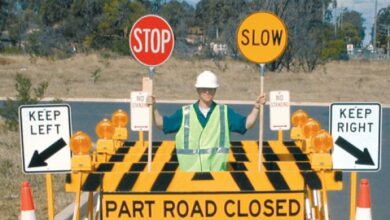
The reading section of the PTE (Pearson Test of English) exam is designed to evaluate test-takers ability to comprehend and analyse written English. It requires strong reading skills and practical strategies to manage time and navigate various question types. In this blog, we will explore the reading section of the PTE exam and delve into the methods and techniques taught in PTE classes that can significantly enhance your reading comprehension and speed.
Understanding the Structure of the Reading Section
The reading section of the PTE exam typically consists of several passages followed by a set of questions. PTE classes provide a detailed breakdown of the different question types to familiarise students with the format. They explain the skills required for each question type, such as identifying the main idea, understanding details, making inferences, and analysing vocabulary. By understanding the structure, pte course fees and expectations of the reading section, students can approach it strategically and allocate their time accordingly.
Active Reading Techniques
PTE classes emphasise active reading techniques to improve comprehension and speed. Skimming is a technique where students quickly read through a passage to understand its main idea, overall structure, and topic sentences. It allows them to grasp the general context before diving into the details. On the other hand, scanning involves quickly searching the passage for specific keywords or information required to answer the questions. By practising these techniques, students can efficiently navigate passages and identify relevant information.
Vocabulary Enhancement
Building a strong vocabulary is essential for understanding the passages and answering vocabulary-related questions in the PTE reading section. PTE classes offer various vocabulary-building exercises and resources. They provide word lists, flashcards, and activities focusing on learning new words in context.
Students are encouraged to read extensively and note unfamiliar words, using techniques like guessing meaning from context and utilising online resources like dictionaries and vocabulary apps. Expanding their vocabulary, students can comprehend complex texts more effectively and answer vocabulary-based questions accurately.
Time Management Strategies
Time management is a crucial aspect of success in the PTE reading section. PTE classes teach students strategies to optimise their time during the exam. They advise students to skim the passage before looking at the questions for an overview. It helps them identify the passage’s main idea, topic sentences, and overall structure.
PTE classes also emphasise setting a pace that allows students to complete the section within the allocated time while ensuring accuracy. Regular timed practice sessions in PTE classes help students develop a sense of timing and learn to prioritise different question types based on their difficulty and point value.
Developing Critical Reading Skills
The PTE reading section goes beyond simple comprehension and requires critical analysis of the passages. PTE classes focus on developing critical reading skills by teaching students to identify the author’s purpose, tone, and main argument. They provide strategies to recognise rhetorical devices, logical reasoning, and the use of evidence in the passage. By understanding these elements, students can answer inference-based questions more effectively. PTE classes also encourage students to engage with various texts outside the exam context to enhance their critical reading abilities further.
Practice with Sample Questions
PTE classes offer many practice opportunities with sample reading passages and questions. These materials closely mimic the format and difficulty level of the actual exam. PTE classes guide students through various exercises, providing a range of passages from different genres and question types. Students practice analysing the passages, answering questions, and managing their time effectively. By practising with various passages and question types, students become familiar with the types of texts they may encounter on the exam and gain confidence in their ability to answer questions accurately.
Effective Note-Taking
Note-taking is a valuable skill that can aid in comprehending complex passages and retaining important information. PTE classes teach students effective note-taking techniques while reading. They emphasise capturing key points, main ideas, supporting details, and critical information that can be used to answer the questions or summarise the passage. These notes act as a helpful reference during the exam, ensuring that students can quickly locate relevant information without rereading the entire passage.
Reviewing and Analysing Mistakes
PTE classes encourage students to review their mistakes during practice exercises and mock tests. By analysing incorrect answers, students can identify patterns of errors and areas that require improvement. PTE classes guide identifying the reasons behind mistakes, whether misunderstanding the passage, misinterpreting the question, or lacking the necessary skills to answer a particular question type.
This reflection and analysis help students understand their weaknesses and enable them to focus their efforts on those specific areas during subsequent practice sessions. By addressing and rectifying mistakes, students can continuously improve their reading skills and boost their performance in the PTE reading section.
Conclusion
Mastering the reading section of the PTE exam involves a combination of solid reading skills and effective strategies. PTE classes are vital in providing comprehensive instruction on various reading techniques, time management strategies, vocabulary enhancement, critical reading skills, note-taking methods, and regular practice with sample questions. Students can contact experts to learn about PTE course fees and other details of classes.
By honing these skills and utilising the techniques taught in PTE classes offered by English Wise or other reputable institutions, students can significantly improve their reading comprehension and speed, leading to higher scores on the PTE exam. With consistent practice, dedication, and guidance in PTE classes, test-takers can confidently approach the reading section and achieve their desired score.





